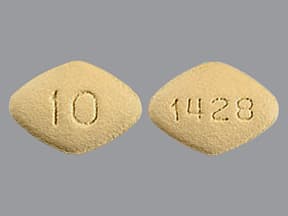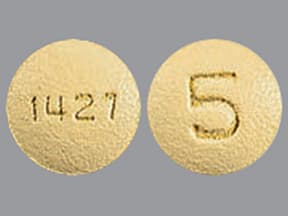Frequent urination, dizziness, or lightheadedness may occur. If any of these effects last or get worse, tell your doctor or pharmacist promptly.
To reduce the risk of dizziness and lightheadedness, get up slowly when rising from a sitting or lying position.
Remember that this medication has been prescribed because your doctor has judged that the benefit to you is greater than the risk of side effects. Many people using this medication do not have serious side effects.
Tell your doctor right away if you have any serious side effects, including: signs of a urinary tract infection (such as burning/painful/frequent/urgent urination, pink/bloody urine), signs of kidney problems (such as change in the amount of urine, swelling legs/feet).
Get medical help right away if you have any very serious side effects, including: unusual tiredness, nausea/vomiting, stomach/abdominal pain, trouble breathing.
Dapagliflozin can sometimes cause painful urination or pink/bloody urine that are usually signs of a urinary tract infection, but they may also be signs of a rare condition (bladder cancer). Bladder cancer may or may not be caused by dapagliflozin. Tell your doctor right away if you develop these symptoms.
This medication may cause a new yeast infection in the vagina or the penis. It may also cause a rare but very serious bacterial infection in the genital/anal area (Fournier's gangrene) in people with type 2 diabetes. Tell your doctor right away if you have signs of a yeast infection in the vagina (such as unusual vaginal discharge/burning/itching/odor) or in the penis (such as redness/itching/swelling of the penis, unusual discharge from the penis). However, get medical help right away if you have any pain/redness/swelling in or around the genital/anal area, along with a fever or feeling unwell.
This medication may cause you to become dehydrated. This can lead to serious kidney damage. Drink plenty of fluids to prevent dehydration. Tell your doctor or pharmacist right away if you are not able to drink fluids as usual, or losing fluid (such as due to vomiting, diarrhea, or heavy sweating). Also, tell your doctor right away if you have any signs of dehydration, such as urinating less than usual, unusual dry mouth/thirst, fast heartbeat, or dizziness/lightheadedness/fainting.
If you are taking dapagliflozin for diabetes, dapagliflozin does not usually cause low blood sugar (hypoglycemia). Low blood sugar may occur if this drug is prescribed with other diabetes medications, or if you do not consume enough calories from food, or if you do unusually heavy exercise. Talk with your doctor or pharmacist about whether the dose of your other diabetes medication needs to be lowered. Symptoms of low blood sugar include sudden sweating, shaking, fast heartbeat, hunger, blurred vision, dizziness, or tingling hands/feet. It is a good habit to carry glucose tablets or gel to treat low blood sugar. If you don't have these reliable forms of glucose, rapidly raise your blood sugar by eating a quick source of sugar such as table sugar, honey, or candy, or drink fruit juice or non-diet soda. Tell your doctor right away about the reaction and the use of this product. To help prevent low blood sugar, eat meals on a regular schedule, and do not skip meals. Check with your doctor or pharmacist to find out what you should do if you miss a meal.
Symptoms of high blood sugar (hyperglycemia) include increased thirst/urination. If these symptoms occur, tell your doctor right away. Your doctor may need to adjust your diabetes medication, exercise program, or diet.
A very serious allergic reaction to this drug is rare. However, get medical help right away if you notice any symptoms of a serious allergic reaction, including: rash, itching/swelling (especially of the face/tongue/throat), severe dizziness, trouble breathing.
This is not a complete list of possible side effects. If you notice other effects not listed above, contact your doctor or pharmacist.
In the US - Call your doctor for medical advice about side effects. You may report side effects to FDA at 1-800-FDA-1088 or at www.fda.gov/medwatch.
In Canada - Call your doctor for medical advice about side effects. You may report side effects to Health Canada at 1-866-234-2345.

